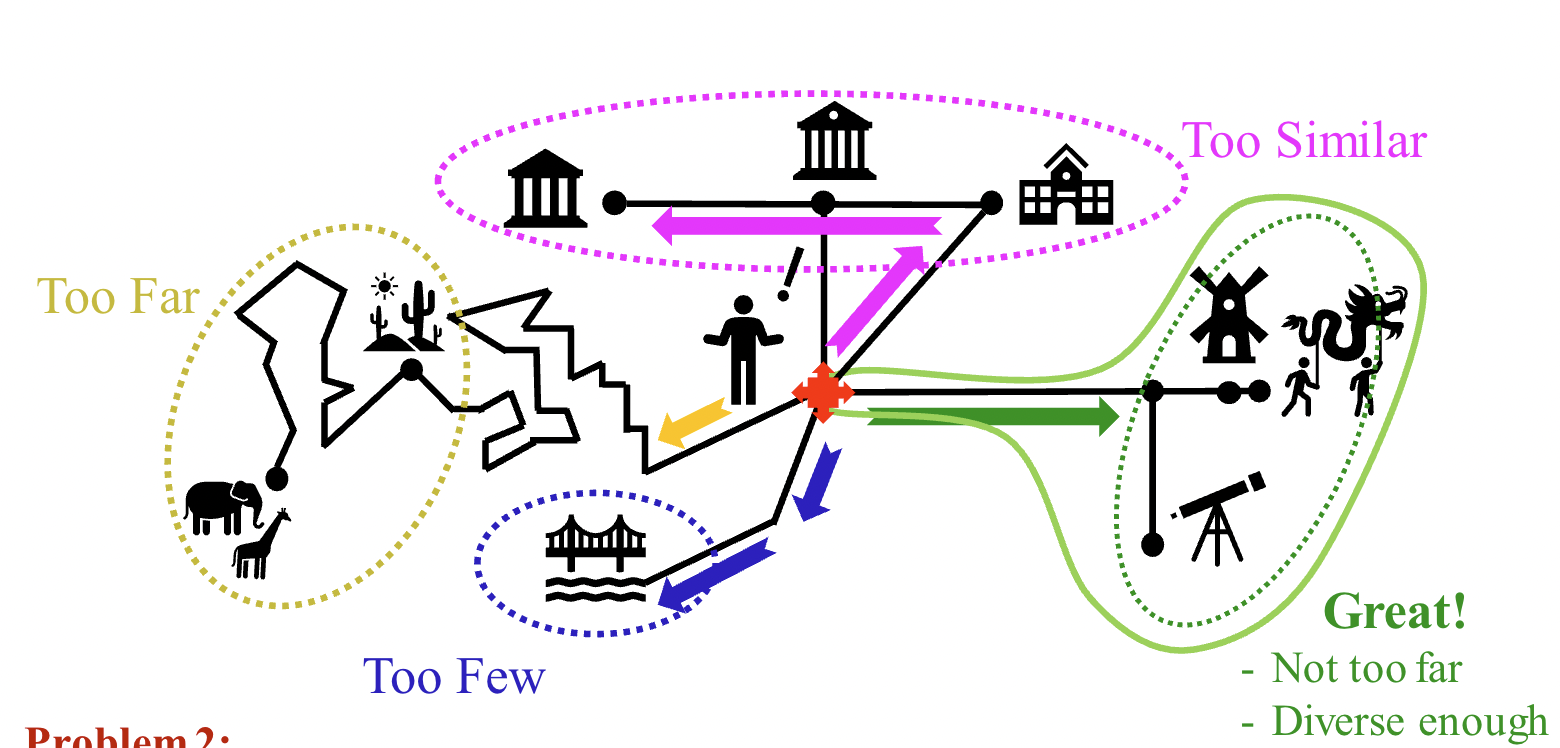
Enhanced Soups for Graph Neural Networks
Presented at GrAPL 2025, co-located with IPDPS 2025
This work presented two novel algorithms for “model souping”, which is a model aggregation technique used to extend the performance of a model (like a model ensemble technique such as bagging or boosting) without increasing the inference-time cost of the model. To do this, multiple models are trained in parallel from the same initialization (which gives them a much greater probability of descending into the same loss landscape), and those multiple models are then interpolated between to find some optimal combination of their weights. Previous techniques relied on an exhaustive search through interpolation ratios, but my novel algorithms used a gradient-descent approach to optimize the interpolation ratios, leading to better final performance and often quicker souping as well.
Data and Resources for Combining Point of Interest Semantics,
Locations, and Road Networks
Presented at SIGSPATIAL 2024
This work presented two major datasets for New York City and Chicago, as well as the tool pipelines used to collect and create them. The datasets consisted of a large number of Points of Interest, each snapped to a road network, mapped to a semantic category, and attached to reviews. Review data consisted of ratings, review text, dates, and additional contextual information. It is our hope that these datasets and pipelines will be used to train and/or evaluate the next generation of routing algorithms which incorporate semantic information.


presented at FIE 2023
This work presented results for tracking team-based learning attendance in an indoor setting using both cameras and LiDAR sensors. It found that the much more mature, camera-based camera methodology (which used YOLOV6) was more accurate, but that students found it much more intrusive. The LiDAR based approach was a very simple Convolutional Neural Network (CNN) which was slightly less accurate, but still obtained promising results.
Routedoc: Routing with Distance, Origin and Category Constraints
presented at SSTD 2023
This work demonstrated two new pathfinding algorithms which can be used to solve a modified version of the traveling salesman problem. The algorithms can be used to recommend hotels based on a number of constraints, namely distance and any number of points of interest (POI) within any number of POI categories. On average they are much faster and find reasonable paths to POI fitting the restraints. Our implementation ran on a server and used caching, allowing a user to provide a query through our frontend UI and receive a path very quickly. The algorithms were showcased using hotels in New York and Airbnbs in Chicago.
